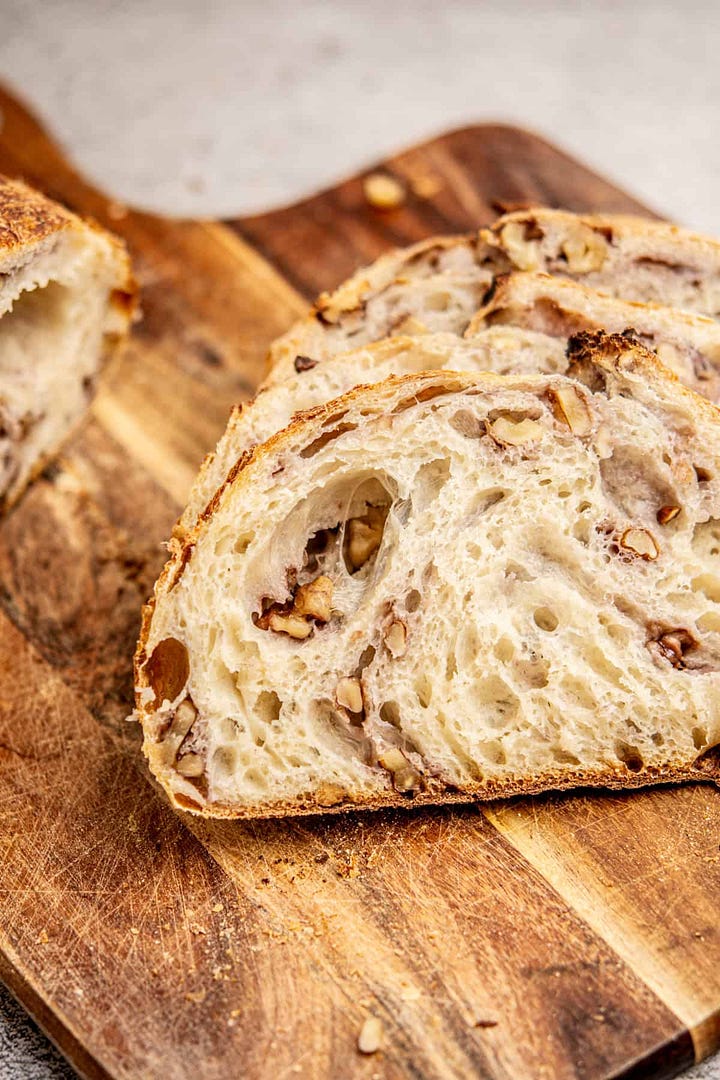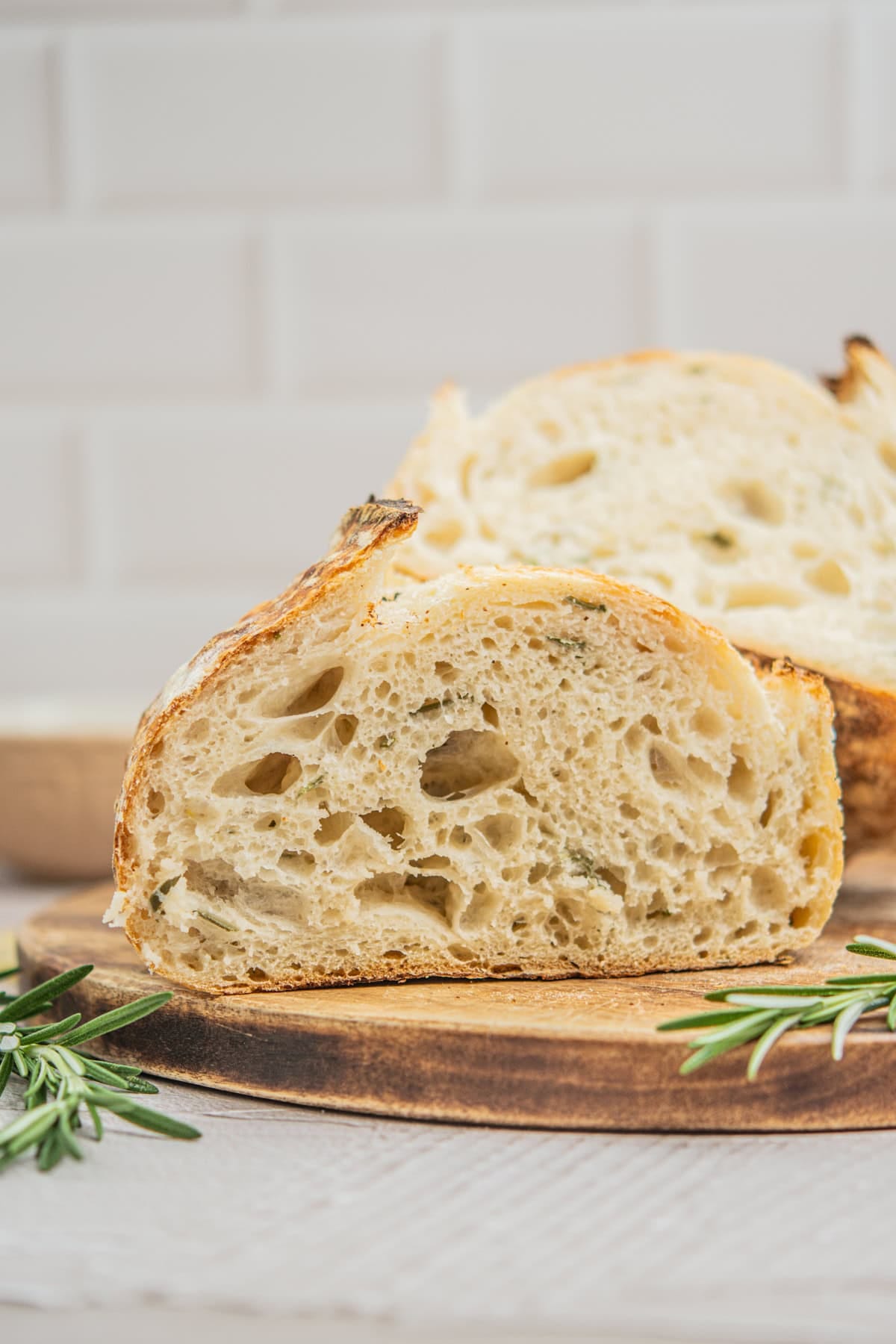Rosemary Sourdough
It’s been a while since my last email! I took January off and it was lovely, just chilling and enjoying NZ summer. Then February came, and things got busy with school starting again and some work opportunities coming my way. But I am finding my flow again and had some time this morning to write an update!
Over January, I got back into making different sourdough flavours. I love making it in the warmer months in Wellington because fermentation happens so much faster than mid-winter, but our summers aren’t crazy hot, so over-fermenting isn’t a huge issue. I’m sharing a rosemary sourdough bread recipe with you today. Fresh rosemary is such a lovely flavour, and it grows well in the garden, so I love to use it when I can. I add in a little fresh lemon zest, too, to brighten it. Rosemary is very strong in flavour, so a little goes a long way. That said, feel free to increase or decrease the amount I suggested to your liking.
Baker’s Schedule
The timing can be tweaked to suit your schedule, but here is a guide to the timeline I currently use when it’s warm. It will change a bit in winter.
9 am: Create my levain.
2 pm: Mix the dough
Between 2-5 pm: Stretch and fold the dough every 30 minutes over three hours.
5-7 pm: Bulk fermentation continued for another 1-2 hours.
7 pm: Shaping and refrigerate overnight.
The next day – The bread can be baked the next morning.
I usually make an offshoot starter, called a levain, for my bread. This portion of the starter is fed and then used entirely in the dough. If you feed your starter differently, that’s fine! I’ve put in the ingredients on how much active starter to use.
Rosemary Sourdough
Levain
25 g sourdough starter
50 g all-purpose flour
50 g water
Dough
400 g bread flour or all-purpose flour with protein of at least 11%
285 g water
1 tbsp lemon zest finely grated
1 tbsp fresh rosemary chopped, decrease or increase to taste
All the levain (around 100g active starter)
8 g salt
The pictured bread was made with white flour, but I often make it with a mix of whole wheat and white. Then, I use 320 g of bread flour and 80 g of whole wheat flour. The rest of the ingredients stay the same.
Instructions
Mix together the starter ingredients in a bowl and stir well until thoroughly mixed. Add it to a clean jar and loosely cover it. Leave it in a warm spot until it doubles in size.
When the starter has almost finished rising, combine the flour in a large mixing bowl. Use a fork or wooden spoon to bring it together, then switch to wet hands to mix it into a shaggy dough ball with no dry bits of flour remaining. Cover the bowl and let it autolyze at room temperature until the starter is ready.
Add the starter, lemon zest, rosemary, and salt to the dough and squish it with wet hands. Slap and fold the dough in the bowl for around 3-4 minutes to incorporate it better and begin to develop the structure.
Over the next 3 hours, stretch and fold this dough every 30 minutes. Pull the dough up and over itself, turn the bowl a quarter turn, and repeat. Do this on all sides, and always use wet hands.
After the folds, place the dough in a clean bowl and give it another hour or two to finish the bulk ferment. There should be definite signs of activity on the dough like bubbles forming and the dough jiggles if you shake the bowl. At a room temperature of around 25°C/76°F, my dough needs about another 1-2 hours, but it will take longer in colder temperatures.
Shape the sourdough into a batard or ball, depending on what basket you’re using.
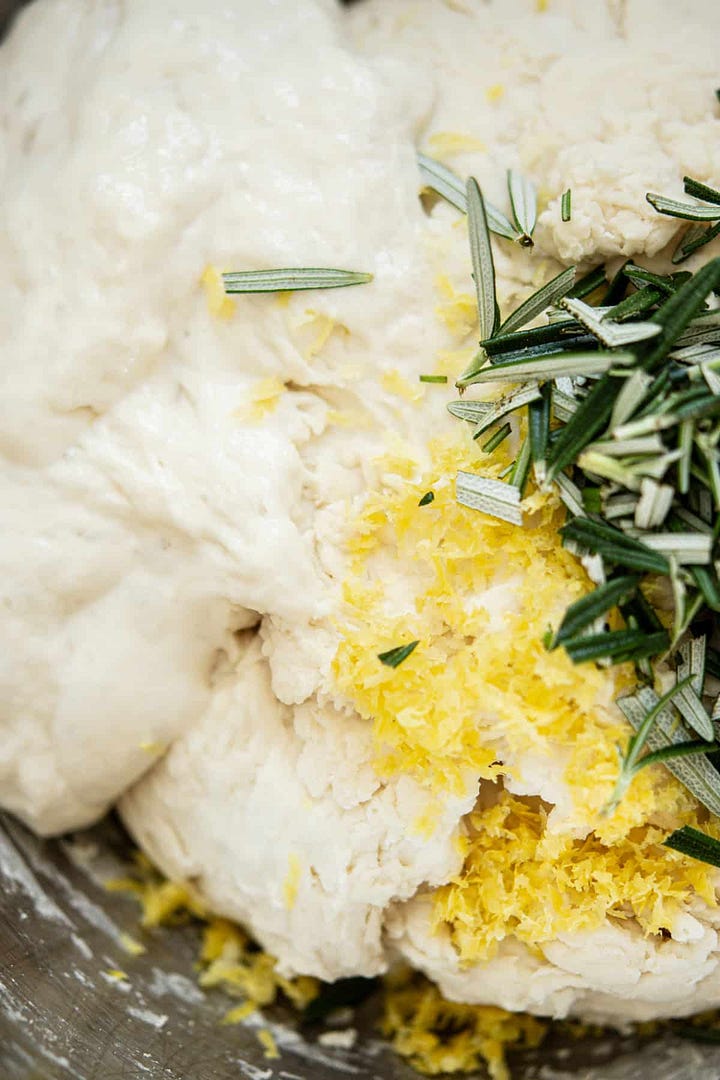
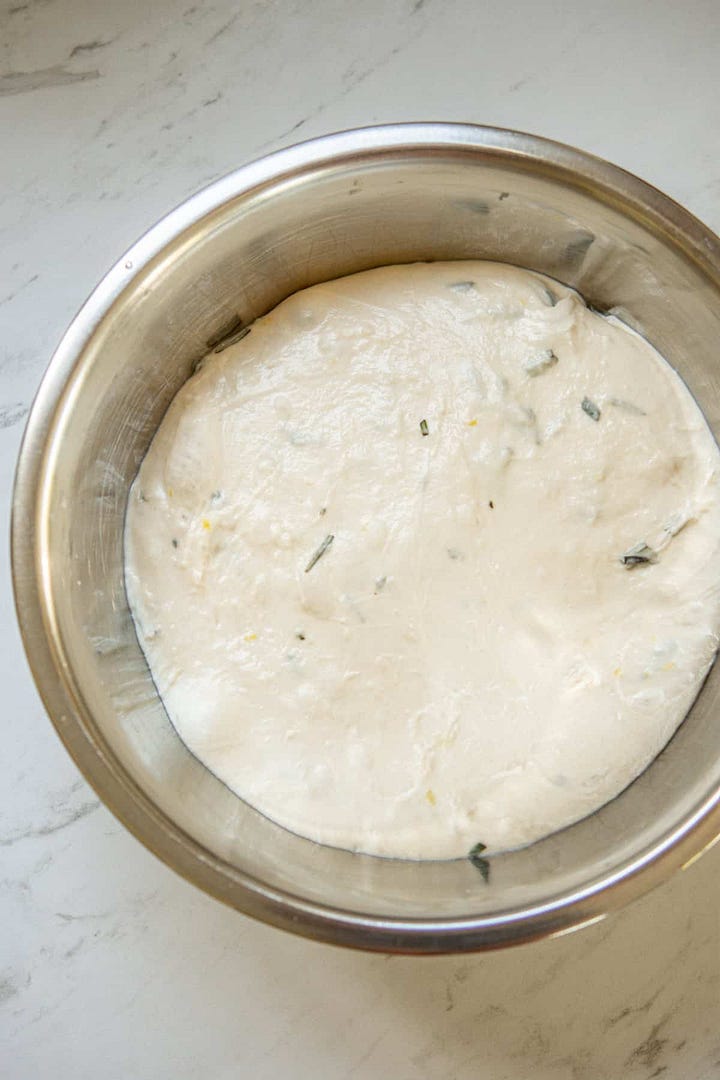
To shape a simple bâtard:
Lightly flour the bench and tip out the dough. Pre-shape into a round and let it rest for 20 minutes.
Flip it over so the smooth side is down. Gently stretch it into a rectangle.
Fold the top third down and the bottom third up, like a pamphlet.
Starting from the short end, roll it up tightly into a log. Pull the dough towards you on the bench to create surface tension.
Place it seam-side up into a floured, lined banneton for the final proof. Cover the dough with a kitchen towel and cold-proof in the refrigerator for 8-24 hours.

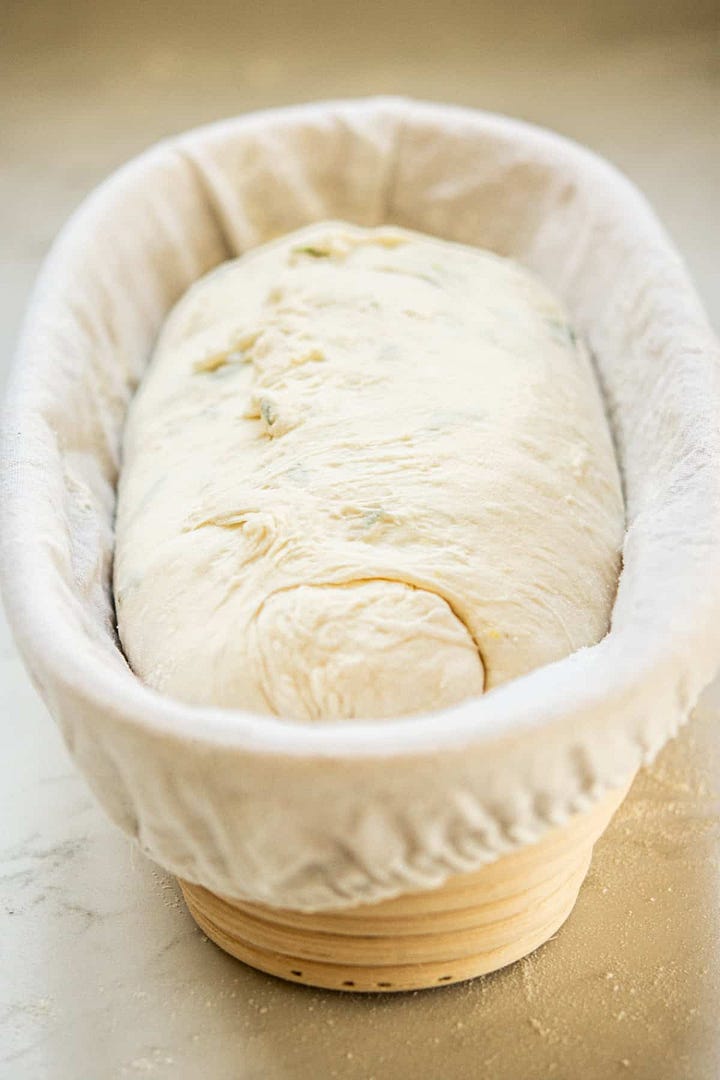
Baking
The next day, preheat the oven and a Dutch oven to 450°F/230°C for at least 30 minutes until well-heated.
Remove the hot Dutch oven and flour the bottom well. Take the dough from the fridge and carefully flip it out of the basket and into the Dutch oven. If baking this in a large pot, it’s best to tip your dough onto parchment paper. This way, you can lower it into the pot.
Score the dough using a razor blade or sharp knife.
Bake covered with the lid for about 20 minutes. Remove the lid and bake uncovered for 20 minutes more depending on your preference and your oven, Some ovens run hotter and may need less time, while others need more.
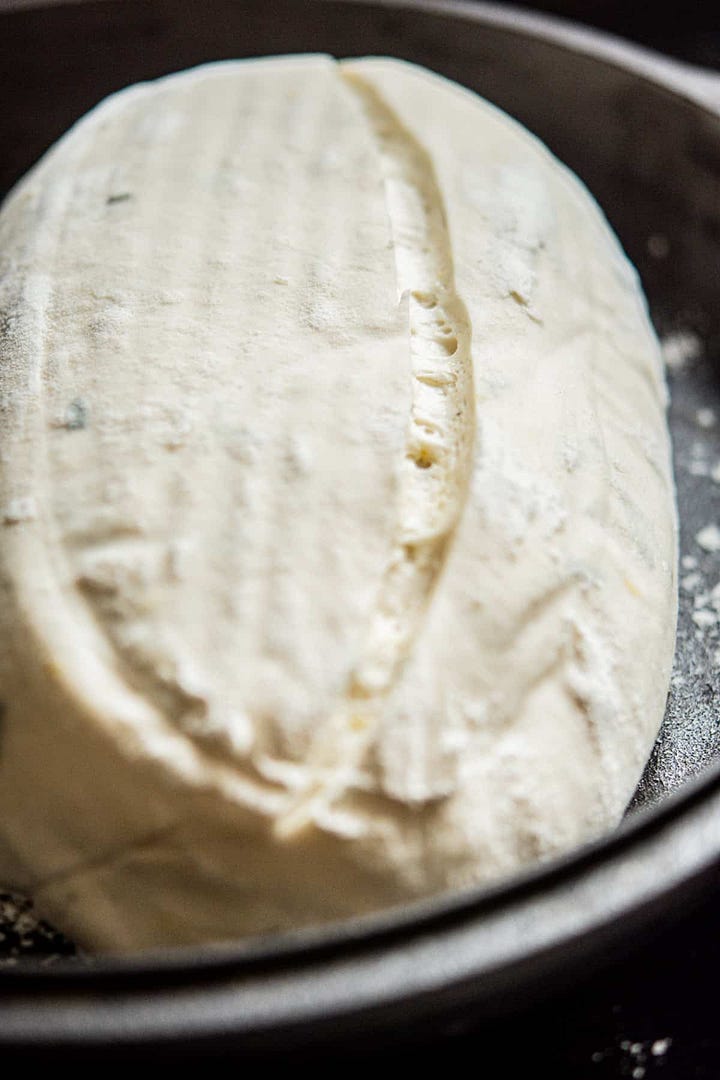

More sourdough recipes you might like!
Sourdough discard naan
Soft, chewy, and packed with flavor, sourdough discard naan is an easy and delicious way to use up extra sourdough starter.
Honey walnut sourdough
This honey walnut sourdough is a lovely balanced bread. It’s slightly sweet and nutty, with toasted walnuts that bring awesome texture. This loaf is perfect for both savoury and sweet toppings.

